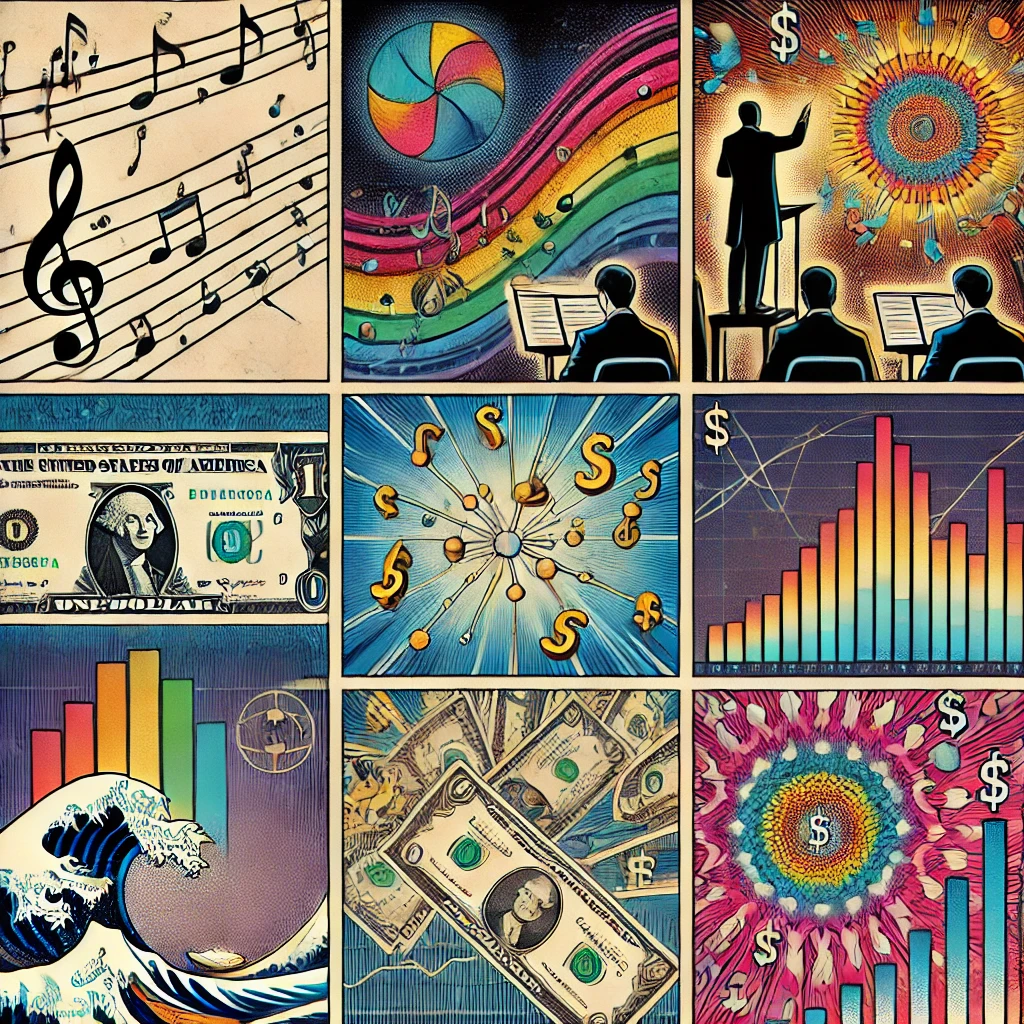Fiat Notes Music and Monetary Theory Overlap
Stephanie demonstrates how fiat bank notes have much in common with fiat musical notes. Her book, The Next Octave, discusses this, along with other aspects of hidden history including the structure of the harmonic series and the worldwide distortion of our musical system through temperament mistunings.
She is joining the Unguru team as an educator on harmonic frequencies and how music theory can inform economic theory. Her book, The Next Octave, discusses many esoteric aspects of the harmonic series, including how the series can inform our understanding of economics.
“The boundary of the octave is not a limiting force. Within it, notes may subdivide to infinity without ever coming into contact with the walls of their octave container. What keeps the scale from growing too large too quickly is not the octave boundary but the supply of notes in the previous octave.”
“The quality of the octave renders possible the projection of the infinity of tones into one octave space. The octave, then, is to be considered a representation of the infinite…”
NOTES. Even CENTS, the finest divisions…same in money…same in music.
===
Stephanie McPeak Petersen’s work on “Fiat Notes: The Overlap of Music Theory and Monetary Theory” appears to explore the intersection between two seemingly disparate fields: music theory and monetary theory. Here’s a breakdown of the potential concepts associated with this topic:
1. Fiat Currency: Fiat currency is money that has value because a government has declared it to be legal tender, rather than being backed by a physical commodity like gold or silver. The term “fiat notes” likely refers to paper money issued by governments as part of their monetary systems.
2. Music Theory: Music theory is the study of the principles and elements that govern the composition, performance, and analysis of music. It encompasses concepts such as harmony, melody, rhythm, and form, as well as the historical development of musical styles and genres.
3. Overlap of Music Theory and Monetary Theory: The title suggests that there may be parallels or connections between concepts in music theory and monetary theory. For example, both fields involve systems of organization and regulation (e.g., musical scales and chord progressions in music theory, monetary policies and central banking in monetary theory). Additionally, both music and money are forms of human expression and social organization, with cultural, economic, and political implications.
4. Metaphorical Associations: It’s possible that the title “Fiat Notes: The Overlap of Music Theory and Monetary Theory” could also imply metaphorical associations between music and money. For instance, one might explore how the concepts of harmony, balance, and rhythm in music relate to economic stability and financial regulation. Alternatively, the title might suggest an investigation into the symbolic or cultural significance of money in music, such as the role of patronage in supporting musical creativity or the commodification of music in the digital age.
Overall, Stephanie McPeak Petersen’s work on “Fiat Notes: The Overlap of Music Theory and Monetary Theory” seems to invite interdisciplinary inquiry, exploring connections between music theory and monetary theory and examining how concepts from each field might inform or illuminate the other.
